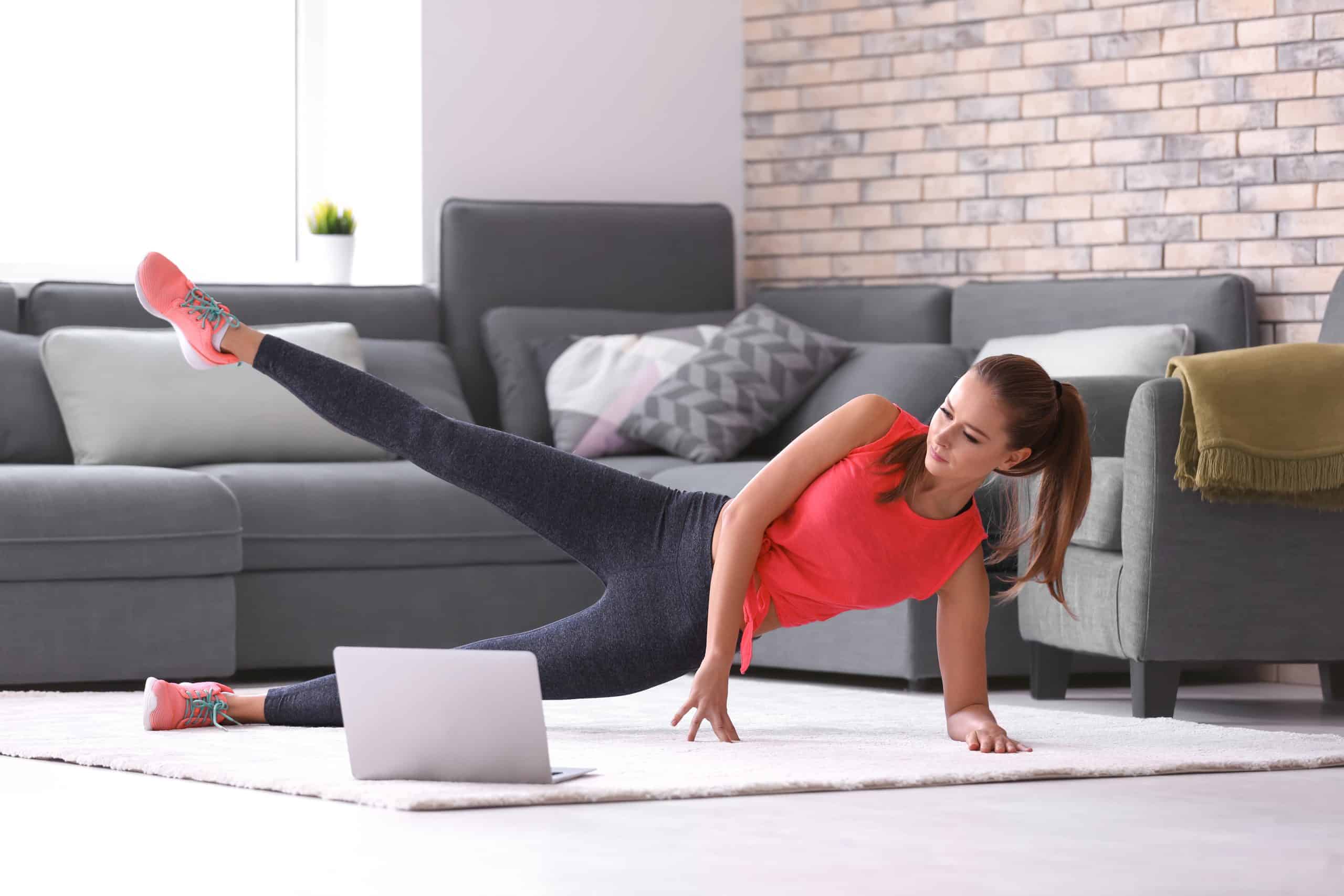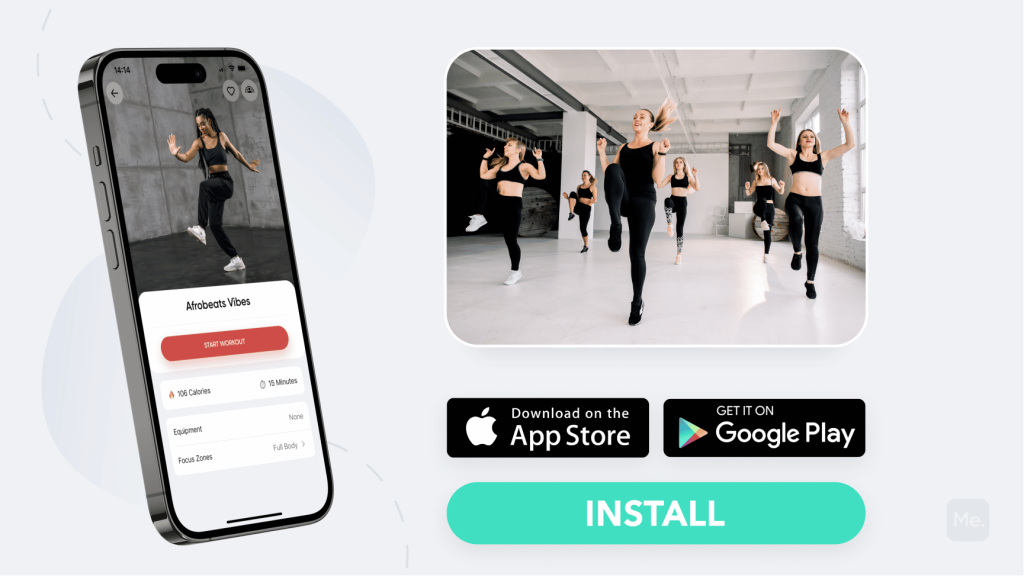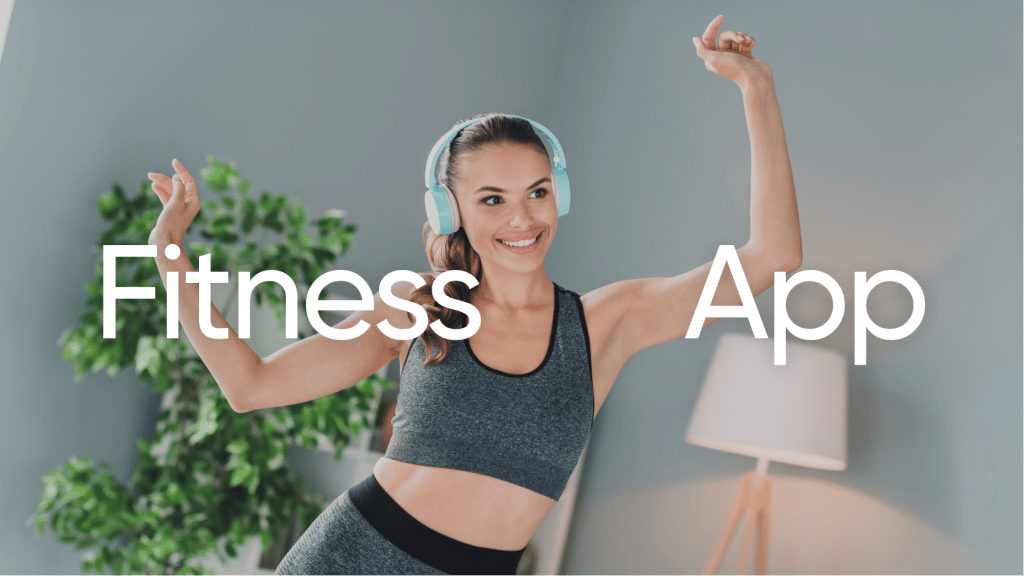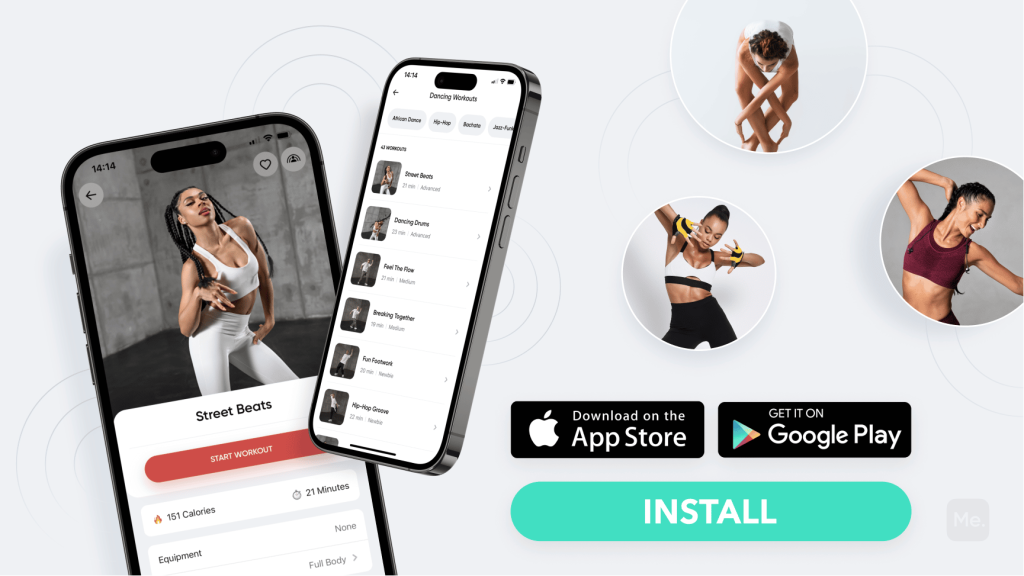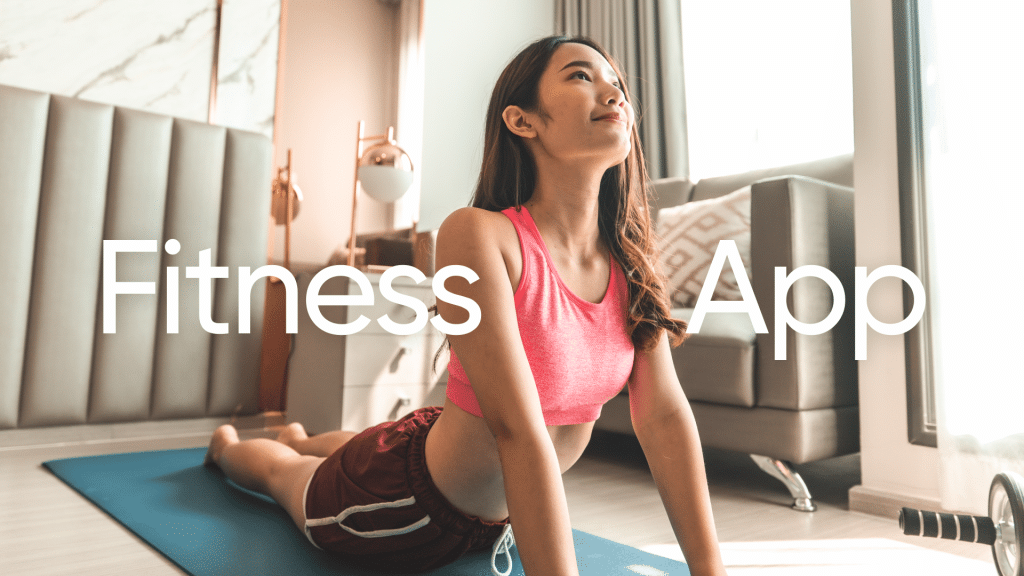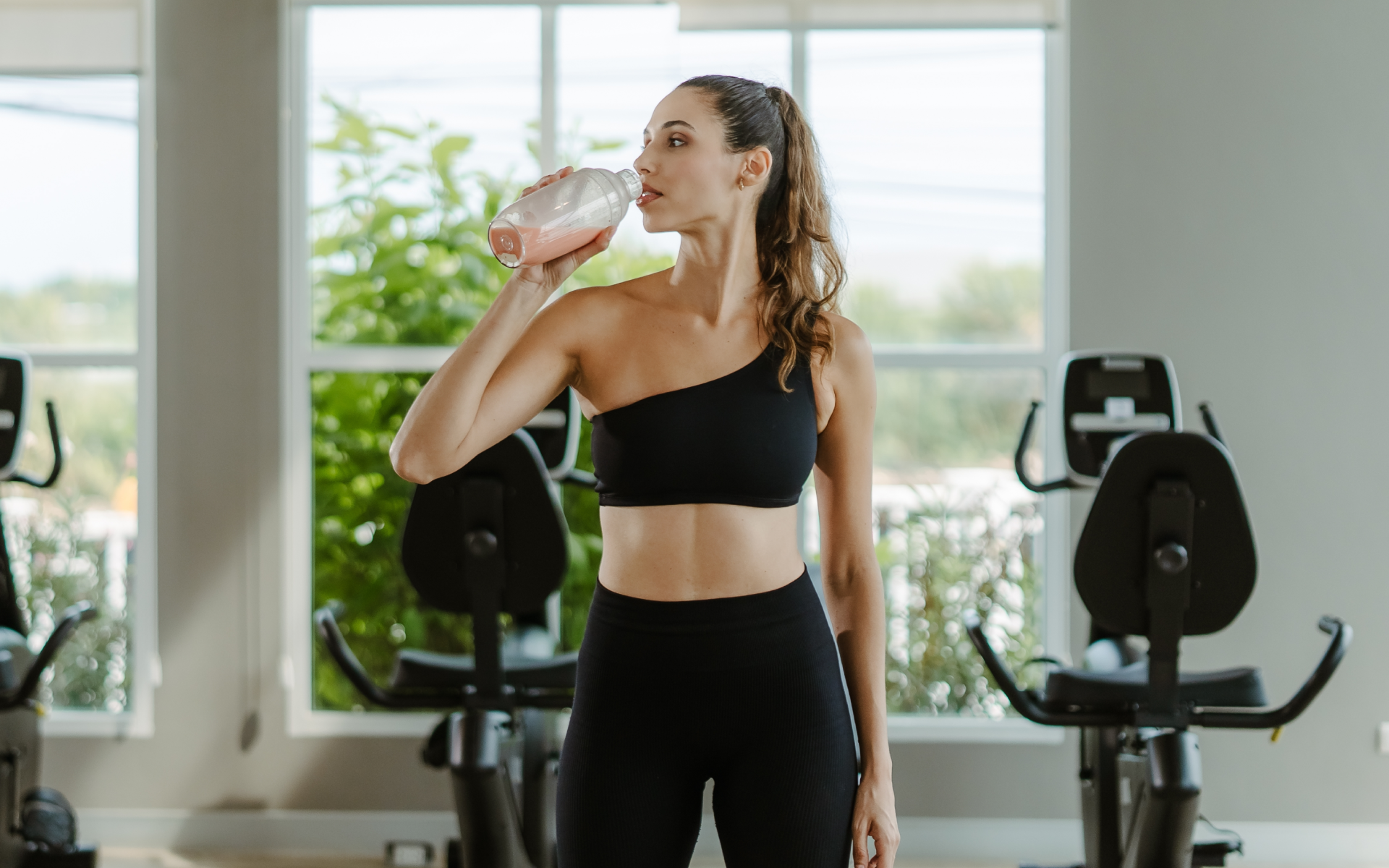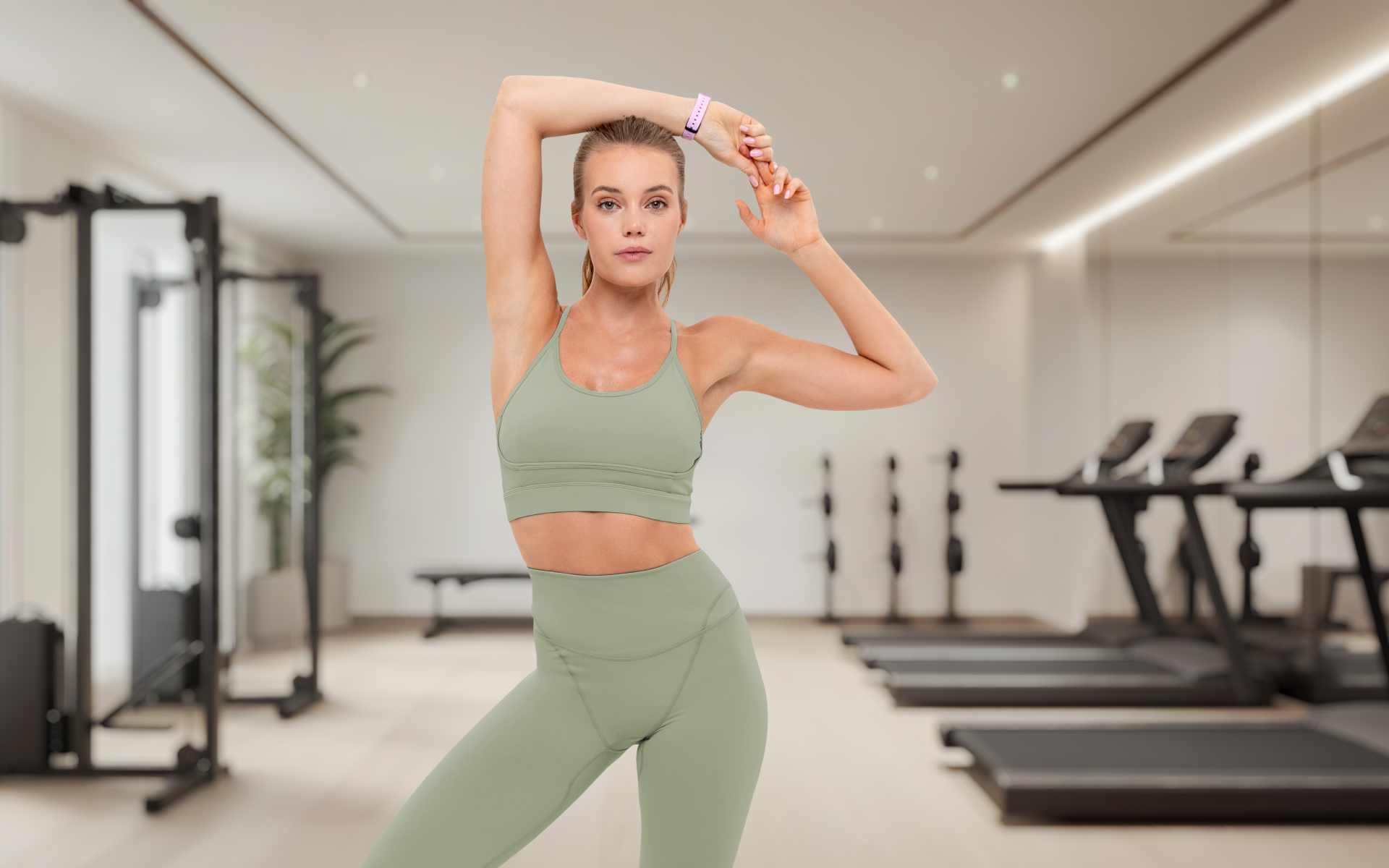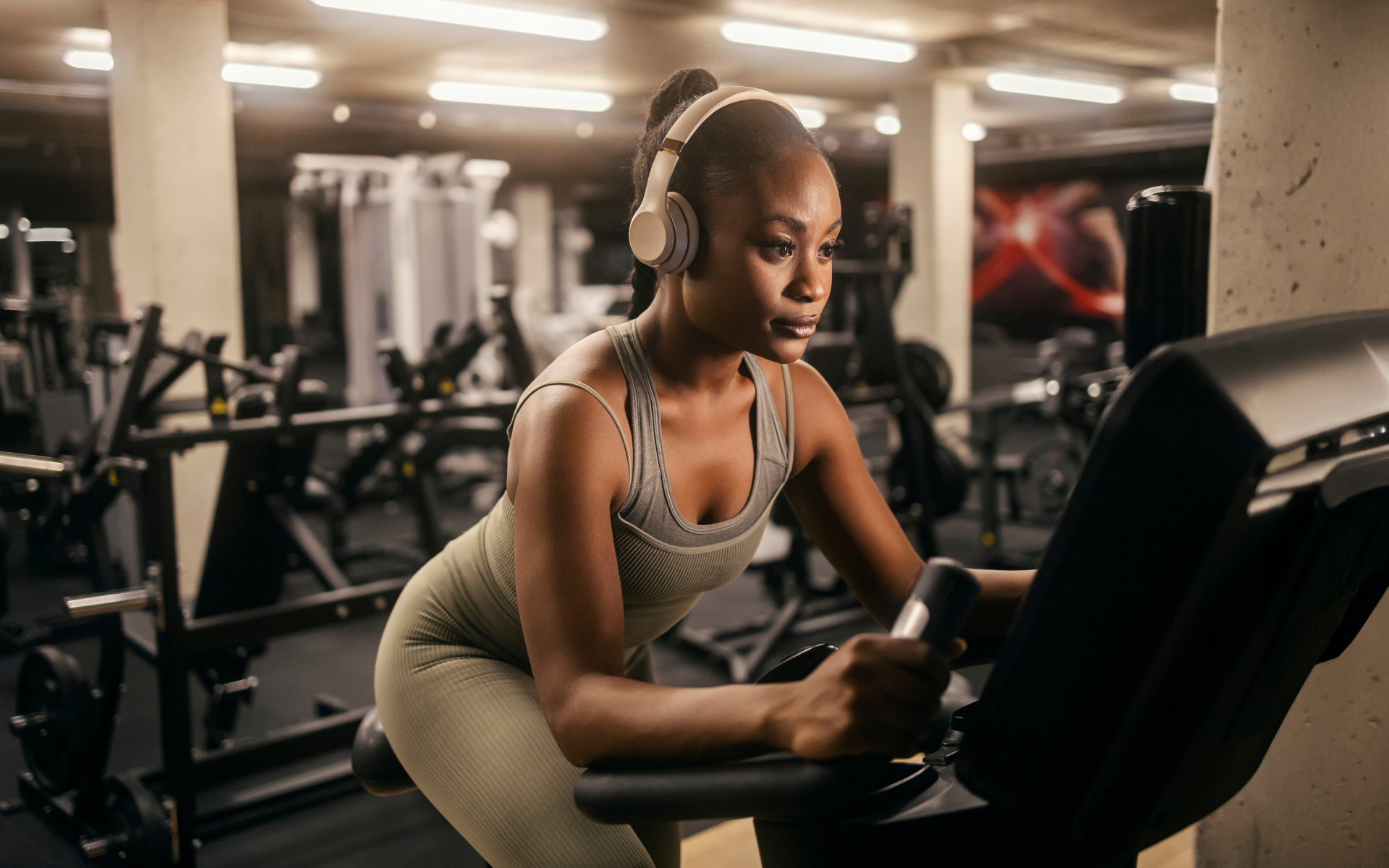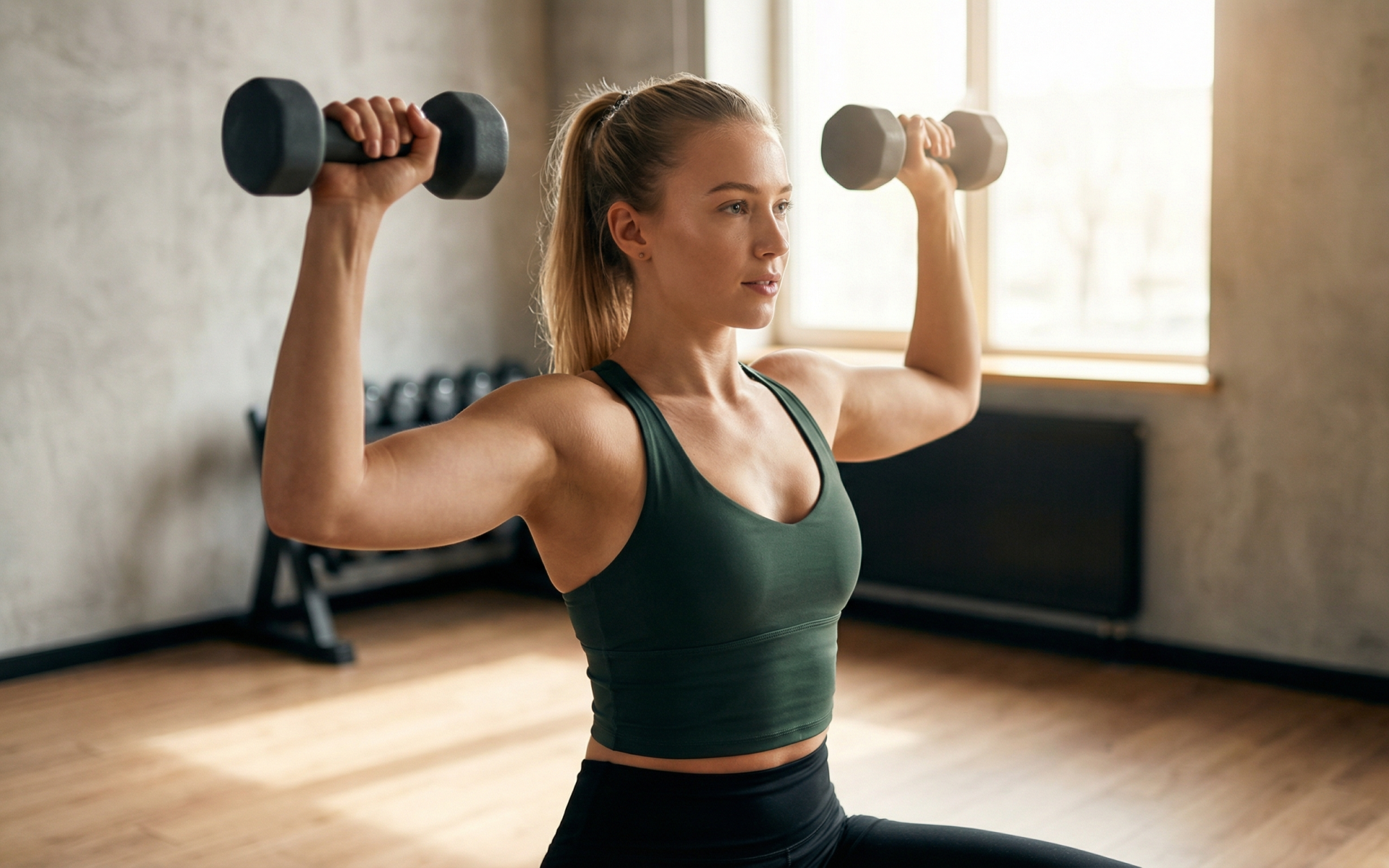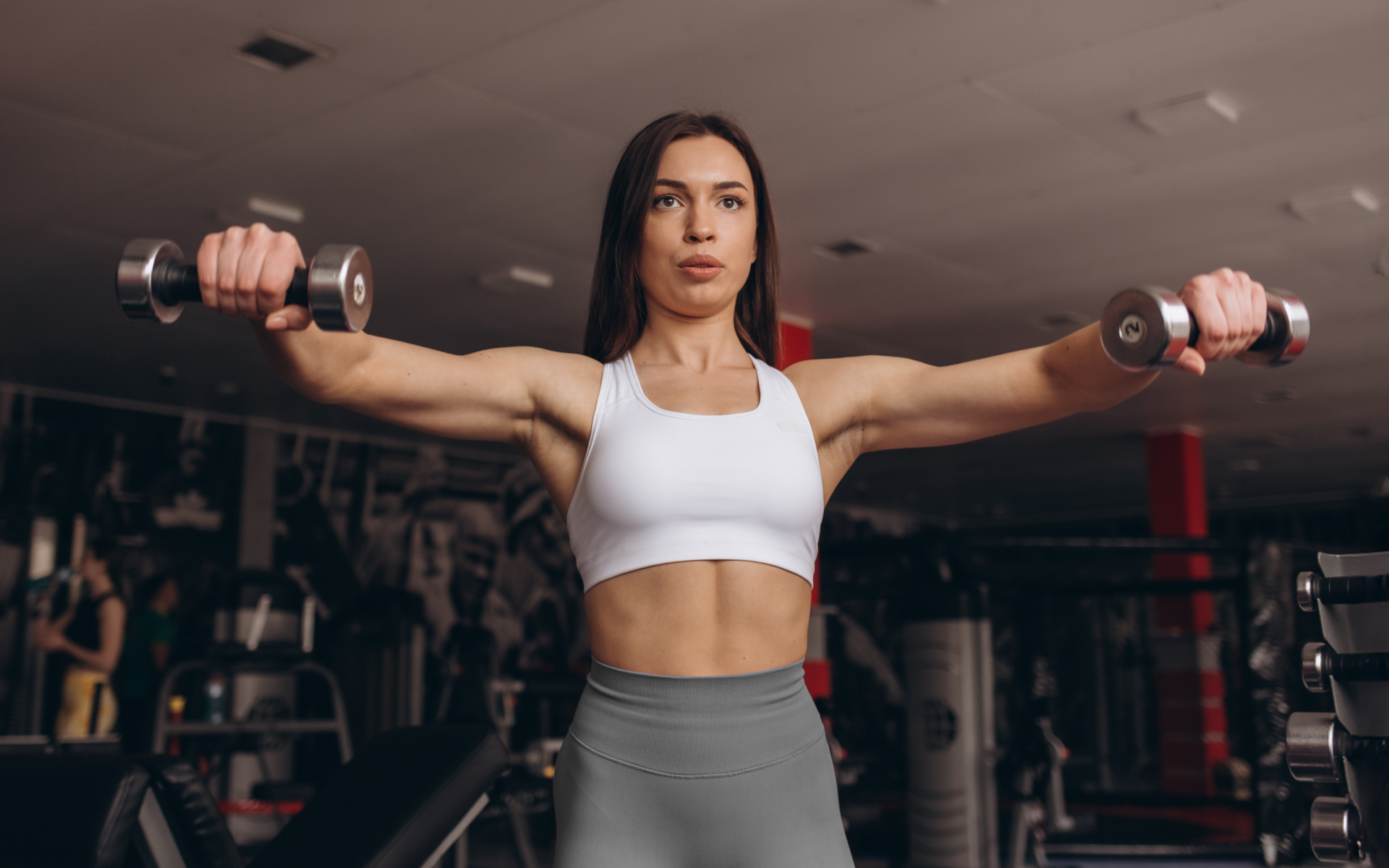One underrated quality of an active lifestyle that guarantees success, is sustainability. No matter what your goal is, if you cannot sustain the necessary activity, you will not reach it. When you can’t go to the gym or other facilities, you must still find ways to maximize the results of your workout plan at home. Home workouts have several advantages over gym workouts – they are more convenient, cost-effective, and can fit into tight schedules. However, without the guidance of a personal trainer, it can be difficult to achieve your fitness goals. It’s even more difficult to stay motivated and consistent with your exercise routine. To help you get the most out of your at-home workout, we’ve compiled 7 helpful tips. From workout choice and length to equipment and tracking, here are 7 simple tips for maximizing results with a 6-week workout plan at home.
Get your personalized
meal plan!
Why 6 Weeks?
The number 6 isn’t just a random number; it’s the perfect time frame to make a change. The American Council on Exercise (ACE) estimates that it takes at least 4 weeks and at most 16 weeks for the human body to adjust and make significant changes to exercise routines (1).
Six weeks is the sweet spot – long enough you can get results but short enough that it doesn’t become overly difficult or boring.You’re probably wondering, what happens after 6 weeks? If you still want to continue your progress and achieve more, then it will be time to switch things up. Maybe switch exercises or change your routine completely.
We’ll point you in the right direction later in this article. Another question you might have is how you should measure your progress or know when you need to switch up. Fortunately, there are a few ways to measure your results.
You can use body measurements, take photos of yourself before and after the 6-week period, or you can perform fitness tests (like push ups, sit ups, etc.).
Again, we’ll discuss measuring progress in more detail later. Let’s get into how to plan a workout week at home, maximize your results, and stay motivated.
Tip #1: Exercise Choice
Knowing how to create an at home workout plan doesn’t necessarily mean mastering every single exercise ever made. It’s important to choose exercises that are appropriate for your skill level and are going to provide the most results in the given time frame.
The only condition you must meet is that the exercises you choose should be both compound (that target multiple muscle groups at once) and isolation/ multi-joint (that require movement across more than one joint). This way you can maximize the efficiency of your workouts.
- Compound exercises include: squats, deadlifts, chest press, shoulder press, and rows.
- Isolation/multi-joint exercises include: bicep curls, triceps extensions, single leg deadlifts, and lateral raises.
By splitting your workout plan into both compound and isolation/ multi-joint exercises you can make sure that you target all the major muscle groups as well as work on your individual muscles to improve strength, tone, and muscle definition.
How many exercises you do per workout will depend on a few factors such as the time you have for your workout, how many sets and reps you’re doing, etc. You shouldn’t choose less than 5 exercises, but also no more than 10. Naturally, a lower number is best when starting out so that you can focus on mastering each exercise and proper form.
One downside of at home workouts is that you might be limited as to what equipment you have. Bodyweight exercises might work at first, but to progress you’ll need to invest in the right equipment for your goals. Luckily, most exercises can be done with portable and affordable equipment such as resistance bands, dumbbells, kettlebells, or stability balls.
Read More: A Guide To Choosing The Right Sexy Front-Tie Support Top For Dance Workouts
Tip #2: What To Do, When
Workout splits are basically how you plan to divide up your workouts during the week. For example, you can do full-body workouts every day, upper and lower body workouts on alternating days, or focus on a single muscle group per workout (i.e., chest and back one day, legs another etc.)
It’s important to think of your split as a roadmap; it’s the general plan for what you’ll do throughout the week, but it doesn’t mean it’s set in stone. Leave yourself some wiggle room so that if you need to switch something up or add an extra day of rest due to fatigue, you can. Even then, aim to be as consistent as you can.
The idea behind splitting workouts is to give yourself enough rest for each muscle group so that you can recover and come back stronger the next day. Generally, you should have at least 24-48 hours of rest between working out the same muscle group.
Also, make sure each workout is structured in a way that you can get the most out of it. Start with the big compound exercises first, and then move onto isolation/multi-joint exercises.
Tip #3: Duration Of Home Workouts
Now that you know what exercises to choose, the next step is to determine how long each workout should last. You will want to keep your workouts short enough that you can still have energy for other activities in your day but long enough that it’s effective.
A good starting point is about 30-45 minutes per workout. You can go longer than that, but you should never rush your workouts in order to complete them faster. Your form and technique are more important than the number of reps or sets completed. You also need to rest in between each exercise and set, so that your muscles can recover.
How many reps and sets you should do per exercise depends on your goals and will ultimately determine the length of your home workout. Generally, for muscle building and strength training, you should aim for 8-12 reps and 3-4 sets of each exercise. For endurance or fat loss, opt for more reps with less weight – 12-15 reps and 2-3 sets.
How long you rest in between sets also depends on your goals. If you’re looking to build muscle, rest 45-90 seconds in between each set. For fat loss and endurance, keep it between 15-30 seconds. These are estimates; you should rest enough to be able to complete the next set with proper form.
Tip #4: Choosing Weights
Beginners have a simple task-to understand how an exercise works, which muscles it targets and how to execute it with good form. Once you’ve gained that understanding, the next step should be to find a weight that challenges your muscles without overloading them or resulting in poor technique.
For compound exercises, choose a weight which allows you to complete 10-12 repetitions. This should be heavy enough so that you cannot do any more reps while maintaining good form. For isolation exercises, you should aim for 8-10 reps and increase the weight as needed to reach muscle fatigue.
The weight is too light if:
- You can complete more than 12 reps
- You feel like you have too much energy at the end of your set
The weight is too heavy if:
- Your form suffers as you struggle to lift the weight.
- You can only complete a few reps despite good form.
At first, it might take you some trial and error to find the right weight for each exercise. Over time, you’ll get a better feel for what’s right for you and be able to adjust quickly.
It’s also important to remember that you can always increase the intensity of an exercise without increasing the weight by simply increasing the speed or number of repetitions.
If you wish to free yourself from all the extra pounds that have been weighting you down for way too long, start using the BetterMe app and overhaul your entire life!
Tip #5: A Rounded Approach
The last tip is to make sure you’re taking a rounded approach to your home workouts. Instead of focusing solely on one aspect – like strength or cardio – try to incorporate all elements of fitness into each session. This will help you achieve better overall results in the long run and reduce the risk of injury.
Sure, there’s a lot to learn and you may not be able to do it all at first. Furthermore, a complicated task is more likely to demotivate you. Instead, start off simple with a basic routine.
However, with time you’ll need to incorporate other activities that contribute to overall wellness. Cardiovascular exercise, for example, will greatly improve your endurance and cardiovascular health. Yoga and stretching will help you with balance and flexibility. Meditation can help reduce stress and anxiety.
These elements don’t have to be done every day, but know that you’ll eventually need to incorporate them into your home workout routine.
Tip #6: Knowing When To Switch It Up
Sticking to a routine for at least 4 weeks is proven to be an effective way to make changes to your body. But after following a workout for a long period, you may experience general adaptation syndrome.
The American Council on Exercise defines general adaptation syndrome as “the body’s inability to adapt to the same training stimulus over time, resulting in a plateau of progress or even a decline in performance.”
Basically, when you begin a new program, your body is receptive to the new stimulus. After 4 weeks, it adapts to the stimulus and is able to tolerate it. After 12 weeks, it reaches the exhaustion point (1).
The timeline for reaching the exhaustion point varies from person to person, so it helps to know the signs that it’s time to make a change:
- Your progress has plateaued – not losing weight, getting stronger, or improving fitness? You might be stuck in a rut because your body is used to the routine. It’s time for a change (2).
- You’re losing motivation – finding it hard to get excited about your workout? It might be time to switch up the exercises or format of your routine. However, this sign should be considered alongside the other indicators.
- You’re experiencing more aches and pains – your body is trying to tell you something! Overuse injuries are common when your body isn’t given enough rest and recovery (3). Switch up the exercises or take a break for a few days.
Having a tracking system will help you keep an eye on your progress and make sure that when it’s time for a change, you’re ready. What should you track?
- Weight
- Body fat/measurements
- Exercise frequency/intensity
- Sleep and nutrition habits
By tracking these data points over time, you can quickly identify when it’s time to switch up your routine.
Tip #7: Work With A Coach
If you’re really struggling with creating a workout routine that works for you and helps you achieve your goals, consider working with a coach. Having someone to help you stay accountable, provide feedback on your form and technique, and help devise the right program for you is invaluable.
Coaches can also provide you with the motivation and encouragement that’s often needed to keep going. Plus, they understand how to design a program that’s tailored to your specific goals. There are many ways to find a coach, such as asking for recommendations from friends and family or searching online.
Before committing to a coach, make sure that you understand the level of expertise they have and that you can trust them to help you achieve your goals.
Read More: How Many Workouts Per Day Should You Do? Here’s What The Experts Say
Sample 6-Week Workout Routines
Below are some sample workout routines that you can use for inspiration. Remember, these are just samples and should be tailored to your specific goals. These are one-week’s worth of exercises that you’ll perform consistently for 6 weeks.
6 Week Bodyweight Workout Plan At Home
Day 1: Lower Body
- Squats: 3 sets of 10 reps
- Lunges: 3 sets of 10 reps (each leg)
- Glute Bridges: 3 sets of 10 reps
- Calf Raises: 3 sets of 10 reps (each leg)
Day 2: Upper Body
- Push Ups: 3 sets of 10 reps
- Pull Ups: 3 sets of 10 reps
- Bent Over Rows: 3 sets of 10 reps
- Shoulder Presses: 3 sets of 10 reps
Day 3: Active Rest/ Cardio
- 30 minutes of light cardio
Day 4: Core
- Plank: 3 sets, hold for 1 minute
- Glute Bridges: 3 sets of 10 reps
- Bicycle Crunches: 3 sets of 10 reps (each side)
- Sit Ups: 3 sets of 10 reps
Day 5: Lower Body
- Squats: 3 sets of 10 reps
- Lunges: 3 sets of 10 reps (each leg)
- Glute Bridges: 3 sets of 10 reps
- Calf Raises: 3 sets of 10 reps (each leg)
Day 6: Upper Body
- Push Ups: 3 sets of 10 reps
- Pull Ups: 3 sets of 10 reps
- Bent Over Rows: 3 sets of 10 reps
- Shoulder Presses: 3 sets of 10 reps
Day 7: Rest
Yanking yourself back in shape has never been so easy with our game-changing fitness app! Start transforming your life with BetterMe!
6 Week Dumbbell Workout Plan
Day 1: Lower Body
- Squats: 3 sets of 10 reps
- Lunges: 3 sets of 10 reps (per leg)
- Glute Bridges: 3 sets of 10 reps
- Step Ups: 3 sets of 10 reps (per leg)
Day 2: Upper Body
- Chest Press: 3 sets of 10 reps
- Bent Over Rows: 3 sets of 10 reps
- Bicep Curls: 3 sets of 10 reps (per arm)
- Overhead Press: 3 sets of 10 reps
- Tricep Extensions: 3 sets of 10 reps
Day 3: Core
- Plank Hold: 3 sets of 30 seconds hold
- Sit Ups: 3 sets of 10 reps
- Russian Twists: 3 sets of 10 reps (per side)
- Bicycle Crunches: 3 sets of 10 reps (per side)
Day 4: Rest
Day 5: Lower Body
- Deadlifts: 3 sets of 10 reps
- Glute Kickbacks: 3 sets of 10 reps (per leg)
- Calf Raises: 3 sets of 10 reps (per leg)
- Reverse Lunges: 3 sets of 10 reps (per leg)
Day 6: Upper Body
- Upright Rows: 3 sets of 10 reps
- Chest Fly: 3 sets of 10 reps
- Shoulder Shrugs: 3 sets of 10 reps
- Hammer Curls: 3 sets of 10 reps (per arm)
Day 7: Rest
The Bottom Line
A 6 week at home workout plan is a great way to get in shape and build strength. Design your own using the tips and sample plan provided above, and you’ll be on your way to feeling fitter and stronger in no time. Make sure to take regular rest days for recovery, and to properly warm up before each workout.
DISCLAIMER:
This article is intended for general informational purposes only and does not serve to address individual circumstances. It is not a substitute for professional advice or help and should not be relied on for making any kind of decision-making. Any action taken as a direct or indirect result of the information in this article is entirely at your own risk and is your sole responsibility.
BetterMe, its content staff, and its medical advisors accept no responsibility for inaccuracies, errors, misstatements, inconsistencies, or omissions and specifically disclaim any liability, loss or risk, personal, professional or otherwise, which may be incurred as a consequence, directly or indirectly, of the use and/or application of any content.
You should always seek the advice of your physician or other qualified health provider with any questions you may have regarding a medical condition or your specific situation. Never disregard professional medical advice or delay seeking it because of BetterMe content. If you suspect or think you may have a medical emergency, call your doctor.
SOURCES:
- 6 Signs it’s Time to Switch Up Your Workout (2014, acefitness.org)
- A Subject-Tailored Variability-Based Platform for Overcoming the Plateau Effect in Sports Training: A Narrative Review (2022, nih.gov)
- Epidemiology of Overuse and Acute Injuries Among Competitive Collegiate Athletes (2012, nih.gov)
